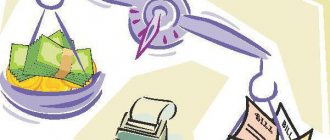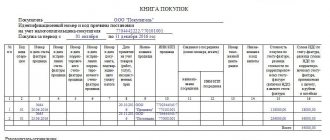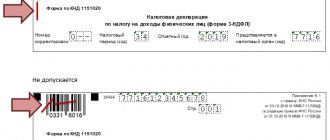“This is how you work and work, and then bam and you don’t have enough money for a vacation.” How often do you encounter a similar situation in your life? When there is not enough money, not only for a good rest with the whole family, but also to simply, have fun and carefree time with your family on the weekends away from the bustle of the city. And then you start to think: what happens to the money? It seems like you’re earning decent money, but there’s no money left. What are they spending on? Where do they go? Will the family budget help with this? How to manage it correctly so that there is enough for everything?
What you will learn from the article:
- What is a family budget in simple words
- What to pay attention to when allocating your budget
- Step-by-step plan for creating a family budget
- Secrets of planning and managing a family budget
- An easy way to be prepared for financial surprises
- Barn book or where to keep a budget for beginners
- Conclusion or the most interesting things are yet to come
Family budget - what is it in simple words
In this article we will look at the basic principles and recommendations for drawing up, maintaining, distributing and planning a family budget. Practical advice will also be given on how to develop useful and necessary habits for its management.
how to manage a family budget
In searching for answers to questions about the fate of our money, we invariably come to the understanding that we need to organize and keep records of it. That is, to understand how much money came to us, how much went out, and how much is left. Proper organization and management of the family budget will help us cope with this task. And this will allow us to take control of our household finances.
There are many definitions of this term in the financial literature. Let's not consider them all. In simple words, a family budget is a financial tool that gives us an understanding of how your money is moving. Maintaining a family budget allows us to control the movement of our money and gives us an answer on what and how much it should be spent on.
The main task of the family budget is to ensure that expenses correspond to your income. That is, so that you don't spend more money than you have. When you take control of the movement of your money, then you understand where, exactly, it came from and what it was spent on.
And, most importantly, when doing home accounting, you need to understand what to do with the money that remains after the distribution of income. After all, your financial well-being depends on it.
Remember that the family budget, like any other, must be in surplus. That is, there should be free funds that can be directed to investments.
Before you start drawing up a family budget, decide who will manage it. Of course, it is better to determine the cost items and their size together. But it’s still better for someone to lead, in order to avoid mistakes.
Family budget, how to manage it correctly
When managing a family budget, you need to take a smart approach to income distribution. Fortunately, there is no hard and fast rule or requirement on how to distribute income correctly or incorrectly. No matter how you distribute them, everything is correct. Since it is your money and only you can decide what to spend the money on first and how much.
There are several recommendations on what to pay attention to when distributing income. And first of all, they are related to your goals and objectives that you want to achieve through budgeting.
The first recommendation is to allocate at least 10% of your total income to building your wealth fund or personal retirement fund, whichever you prefer. Thus, the basic rule of the rich is fulfilled - “pay yourself first.”
This fund will provide for your life in the future, in retirement, and maybe even earlier. It all depends on the income goal you set for yourself. The main thing is to invest these funds in reliable investment instruments.
The next recommendation is to set aside 5-10% of your total income for charity. After all, the more we give, the more comes back to us. These are the laws of the Universe. You may follow them or you may not. The choice is yours, because only you are responsible for your life.
We recommend distributing all cash receipts that were not planned in the budget according to the general principle. That is, to a protective fund (minimum 10%), charity (5-10%), investment fund and other funds at your discretion.
Now that we have made contributions to these two main funds, we can begin to distribute the remaining money to other expense items.
Unfortunately, statistics show that expenses are growing faster than income. Therefore, it is critically important to take control, first of all, of your expenses.
Ideally, you should strive to ensure that after distribution you still have money left over. They will go into your investment fund. That is, you can invest them in various investment projects to create passive income or increase your capital.
It will also be useful and wise to invest money in your education and not only financial ones.
Distribute your finances
We highlighted the main expenses - our monthly minimum.
Set aside a sinking fund: you probably have a lot of equipment and furniture in your house - all of this breaks down over time and requires updating. To prevent expenses from becoming an unexpected burden on your budget, keep and periodically replenish your depreciation budget. Example: the dishwasher is broken - no problem, there is always money to fix it or buy a new one.
Select a fund “in reserve” - various experts advise keeping from 300 to 1200% of your monthly income in it, so that if something happens you can be protected from financial penalties for some time and during this period find new sources of income.
Useful: how to become a millionaire.
There are many options for income distribution, here is another very effective one:
- 50% - current expenses;
- 10% - “just in case fund”;
- 10% - savings;
- 20% - investments;
- 10% - savings for large purchases, vacations, cars.
Set your goals: This step is the starting point of financial planning. You need to know what your long-term goals are as well as your short-term goals. A long-term goal may include planning for retirement and buying a home. Short-term goals may include a vacation, buying a car, etc.
“How much does it cost us to build a house?”, drawing up a family budget
So, let's move on to drawing up a family budget. The budget consists of 3 main items or funds: income, expenses and investments. In a more complex version, it may also take into account the assets and liabilities of the family.
draw up a family budget
The budgeting sequence will be as follows:
- Compiling the consumable part
- Making up the income part
- We compose the investment part
After that, you need to budget on a daily basis. And, if necessary, make adjustments. After all, the family budget should become your main working tool, and not just a formality.
Expenditure part of the budget
The first step towards drawing up a family budget is drawing up its expenditure part. Sit down with your spouse and write down all your daily expenses. Write down everything you remember. Organize this as a table with two columns.
| Expense name | Amount per month |
| Payment for housing and communal services | |
| cellular | |
| Internet | |
| Products | |
| Lunch at work | |
| Movie | |
| Cafe | |
| Travel by bus | |
| Taxi | |
| …. |
These include utility costs, grocery shopping, and visits to cafes and cinemas. Don't forget to add the costs of paying off loans, if of course you have them.
The next step is to record your daily spending on these items. Start doing this now, don't put it off. Moreover, you don’t have to limit yourself; spend your money the way you spent it before. Don't limit yourself under any circumstances.
At this step, statistics of your expenses are collected, which will be used in future planning. If you can immediately write down all the expense items and the amounts for them, then you can immediately move on to the next step.
There will be only one rule: write down the amount of your expenses for each item on your list every day. Even if it’s 13 rubles. This needs to be done constantly.
You can determine a specific time when you and your partner will sit down and enter this data. To do this, you can use a notepad, a notebook, a special application, since there are a large number of them on the Internet, or Excel.
The main thing is to do this every day. It is very important to record all your expenses, even very small ones. It’s not for nothing that there is a saying: “a penny saves a ruble,” and also “money loves counting.”
If in the process of accounting for daily expenses new expenses appear, add them to the table.
Spend money as usual and record these expenses for at least a month, or even two. This will help you determine your fixed or regular monthly expenses.
The next step in drawing up the expenditure side of the budget will be to determine your irregular expenses, that is, those expenses that you make once every two or three months, or even once every six months.
These are the birthdays of your loved ones and friends, payment of insurance or car maintenance, and so on. Write them all down in a separate list or table.
| Expense name | Periodicity | Amount per month |
| Vehicle maintenance | 1 time per year | |
| February 23 | 1 time per year | |
| Birthday | 5 times a year | |
| March 8 | 1 time per year | |
| tire service | Once every six months | |
| OSAGO | 1 time per year | |
| vacation | 2 times per year | |
| Anniversary | 3 times a year | |
| New Year | 1 time per year | |
| Salon | 1 time every 2 months | |
| Taxes | 1 time per year | |
| …. |
Your expense items should include all your possible irregular expenses, such as vacations, gifts, insurance, and so on.
Now calculate how much money you need to save each month to pay for these expenses. This way you can collect the necessary amount for these expenses in advance. For example, every two months you go to the hairdresser. A haircut costs ~800 rubles. It turns out that in a year you go for a haircut 6 times and you will need 4800 rubles for this. Which gives a monthly expense of 400 rubles.
800*(12/2)/12=400 rubles
Next, combine these two tables and group all your expenses into groups and categories. For example, household needs, which will include the cost of paying for utilities, food, buying clothes and others. Another group may be transportation costs: public transport fares, gasoline payments and other transport-related expenses.
There are no strict guidelines for the categories that should be included in your budget. Create ones that you will understand and are comfortable working with.
| Expense Name | Amount per month |
| Household | |
| Housing and communal services | |
| apartment | |
| kindergarten | |
| electricity | |
| Nutrition | |
| supermarket | |
| shop | |
| market | |
| Education | |
| mugs | |
| sections | |
| courses | |
| Household | |
| Self-care | |
| salon | |
| cloth | |
| health | |
| Connection | |
| cell 1 | |
| cell 2 | |
| Internet | |
| Large purchases | |
| technique | |
| auto | |
| Transport | |
| Directions | |
| bus | |
| minibus | |
| train | |
| Auto | |
| fuel | |
| repair, maintenance | |
| washing | |
| Leisure | |
| Trips | |
| vacation | |
| weekend | |
| Entertainment | |
| cafes, restaurants | |
| cinema, theaters | |
| …. |
Having completed all these operations, you will receive the expenditure portion of your future family budget. Now it is presented in a structured form, and it will be easier for you to plan expenses for a month, a year and a longer period. Plus, it will allow you to analyze the required size of each article.
Regular spending items are characterized by renewal, that is, their size is renewed every month and, as a rule, you don’t have to save money for them. Items for irregular spending are accumulative in nature, that is, funds are accumulated for them before they are used.
Revenue part of the budget
Let's move on to the revenue part. This is the simplest, but no less important part of your family budget. It is better to present it in the form of separate income categories. That is, separate categories for the income of each spouse. This will include income from your main place of work, bonuses, part-time jobs and other income. Separately, you need to take into account the income from your assets. They are also called passive or residual income. These include income from bank deposits, rental income, various social benefits, etc.
| Income name | Amount per month |
| spouse | |
| Salary | |
| bonus | |
| part time job | |
| spouse | |
| Salary | |
| bonus | |
| part time job | |
| passive income | |
| garage rental | |
| social payments | |
| deposits | |
| CashBack | |
| Investments | |
| other |
After you have filled out the income and expenditure parts of your family budget, we suggest you take a short test. You need to perform a simple mathematical operation: subtract expenses from income.
What result did you get? More precisely, what sign did you get the result with?
«0“- at the moment you have no financial problems. Your family income covers all expenses. Well done! What will happen tomorrow? What happens if one of the spouses loses their job? We advise you to analyze your expense items to understand how you can reduce them if necessary.
“ positive number ” - you’re great. Your financial prospects are excellent. The main thing is to manage the remaining money correctly.
“ negative number ” - you have financial problems. Unfortunately, you are big spenders. You need to thoroughly study and optimize your expenses and income. You urgently need to take control of your expenses and increase your income.
Investment part of the budget
We recommend that all remaining money, after being distributed among the expenditure items of the family budget, be directed to an investment fund or, in other words, to the investment part of the budget. You can also divide this fund into several sections, depending on the degree of investment risk: low, medium and high risk. Depending on the period remaining until the use of these funds, for example, retirement, you can change the ratio between these items.
We also recommend dividing investments by goals. For example, some investments are created to increase capital. Others are to create passive sources of income, and so on. You can create your own classification.
| Investment name | Amount per month |
| Securities | |
| conservative | |
| moderate | |
| aggressive | |
| Real estate | |
| commercial real estate | |
| profitable apartment | |
| Closed real estate mutual fund | |
| lending | |
| Business | |
| on-line | |
| off-line | |
| someone else's business | |
| Other | |
| crowdfunding | |
| art | |
| lending |
If you have 10-20 years left until retirement, then it is better to invest most of it in low-risk investments. Yes, you will earn less from them, but it will be difficult to lose them. The younger you are now, the more opportunities you have to recover your capital in case of unsuccessful investments.
As a result of completing all the steps, you will get a family budget table
Saving or where to keep the cash register
An important question when managing a family budget will be: where to store the money from the expenditure side of the family budget? Savings accounts are best suited for these purposes. Since accounts can be replenished and withdrawn from them, plus monthly interest is charged on the balance.
where to keep your budget
At the initial stage of maintaining a family budget, you can open one such account in one bank. In the future, as you improve your financial culture, open similar accounts in other banks. The main thing is to develop an algorithm for yourself on how you will transfer money between accounts so as not to pay commissions for these operations.
It is better to carry out spending transactions on your budget using bank cards as much as possible. Since this will allow you to use cashback programs, that is, make money from it.
You can keep a small amount of spending money in the form of cash, but just a small amount. Since you will not receive interest from the bank on this amount. That is, you will lose part of your passive income.
Record basic expenses to make your family budget clearer
Before purchasing an unplanned item, subtract basic expenses from your total income. These include:
Payment for apartment and utilities. If you have your own apartment, it is not recommended to relax: financial planners advise setting aside an amount every month that you could spend on rented housing. It is not at all included in “free money” - later you will be able to buy a new apartment with the savings and rent it out, or give it to your grown-up children;
- Amount for food for the whole family (or you personally if you live alone);
- Expenses for a kindergarten, sports club, tutor for a child, etc.;
- Clothes and shoes that you cannot do without, as well as personal hygiene products and household chemicals;
- Gifts for loved ones if a holiday is approaching (here it is best to get an envelope and put some amount into it every month, as a result, for the holidays you will not have to cut other expenses to buy gifts).
Subtracted? The remainder is "free". It is advisable to spend it at the end of the month, on the eve of the next financial injection. Or put it aside. Save for something: starting your own business, a new apartment, a car. Yes, at least for a chic winter coat! The main thing is that the goal must be realistic.
A nuance: spontaneous purchases are real happiness for many. A financial diet, like a regular one, allows you to “zigzag” - it is important to feel moderation.
Please note taxes, fees and other mandatory payments. Be careful and punctual in paying them.
Try to minimize fixed costs. If your income falls below your fixed expenses, this will hurt your lifestyle.
Family budget planning and management
After you've been tracking your expenses for a month, two or three, it's time to start planning and managing your family budget more consciously.
The result of your planning should be a deficit-free budget. That is, your income completely covers your expenses. Ideally, there is still free money left that you can direct to the investment part of the budget.
There are three principles that will allow you to properly plan and maintain home accounting, and also help accelerate the achievement of financial independence.
- Your income should always be greater than your expenses.
- Revenue growth must be higher than cost growth.
- The money saved should go into an investment fund.
First of all, you need to determine the exact size of each expense item in your budget. And for a month, do not go beyond it under any circumstances. If necessary, save! This is a great opportunity to develop this quality of rich people.
Fix the amount of expenditure items for the year, and during this year do not increase their size unless absolutely necessary. At least try your best to do so. Once a quarter, analyze your expenses and related items.
We recommend that instead of regularly spending items on which money should not accumulate, you transfer the saved funds monthly to items in the investment fund. This will significantly increase the rate of accumulation of money for investments.
When working with the revenue part of the budget, the main emphasis should be on increasing its residual part, and not on increasing wages. Since, when concentrating efforts on increasing the share of salary in the income part, and in the event of job loss, the income part will drop more significantly than if you increased the residual part. After all, it does not depend on whether you go to work or not. Aim to ensure that this portion fully covers your monthly expenses.
You can distribute money among expense items either at the time of receipt of funds for income items, or at the beginning of the month. This will turn out to be a kind of lending to your budget, the main thing is to make sure that at the end of the month your income and expenses match.
So, for a more detailed analysis of spending, specialized applications are suitable. For example, Getcoin or Edadil. The most interesting functionality of these applications is the downloading of receipts and their subsequent analysis by type of purchase.
For example, after shopping in grocery stores, you upload all receipts to the application. And you do this for a month. After analyzing the information received, you will be able to understand what products you spent and how much, and then make an informed decision on optimizing expenses.
It may turn out that you spend a lot of money on sweets. Maybe we should reconsider these expenses? After all, reducing your sugar consumption will have a positive impact on your health and the health of your loved ones.
One of the solutions to simplify the accounting of your daily expenses would be to switch to using bank cards. Since all banks have their own applications, which, in addition to storing the history of your expenses, provide analytical information about expenses by category. And it's absolutely free.
For more information on how to use credit cards, read the article (link will open in a new window).
Financial planning
Any planning is an essential component of success in any area of life, because... allows you not only to divide the process of achieving a goal into several important stages, but also to see new opportunities. Financial planning is the key to material well-being, the presence of a “safety cushion” in unforeseen life situations, the opportunity to achieve many material goals, and even become a financially independent person.
Financial (and any other) plans are usually divided into short-term (up to 1 year), medium-term (from 1 to 3 years) and long-term (from 3 years or more). Accordingly, you need to plan incrementally. Firstly, achieving goals is a step-by-step process in which the implementation of medium- or long-term plans may depend on short-term or medium-term plans. And, secondly, there is always a certain threshold that we cannot overcome at present. In addition, there are some circumstances that cannot be influenced (inflation, sudden layoffs at work, unforeseen necessary expenses, etc.).
To be able to be prepared, if not for everything, then for a lot, you need to have a clear idea of what you will do in a given situation, as well as develop your strategy for achieving your goals. All this includes financial planning.
The best time to get your budget and planning in order is at the beginning of the year. But, of course, there is no need to wait for its onset. Get down to business right away: define your goals, calculate your actions, look for new opportunities and options. This will be your first step towards prosperity and financial well-being.
In conclusion, I would just like to add that you should always remember that a competent attitude towards your budget should become part of your lifestyle, an incentive for professional, career and personal growth; a skill that will make wealth your faithful companion and guarantor of confidence in any life situation. All successful, wealthy and financially independent people talk about this. And to become one of them, you need to finally take care of your personal budget. And we wish you speedy success and good luck in this!
Do you know any other effective ways to manage a personal budget? We welcome your recommendations, advice and comments!
We also recommend reading:
- Storytelling
- Money management
- Time budget
- 8 Best Financial Management Apps
- Analysis of project costs and profitability
- 10 basic rules of financial literacy
- Unit Economics: Do you have a viable business model?
- How to increase productivity and avoid mistakes using a checklist
- Robert Kiyosaki, Sharon Lecter "Rich Dad Poor Dad" - summary
- The Iron Triangle of Project Management
- Personal finance planning: 11 tips
Keywords:1Business
Preparing for financial surprises
Difficult periods happen in everyone's life, especially in a financial sense. One of the spouses may be laid off at work or the company will cease to exist, then you will have to look for a job, and this will take time. How and on what will the family live during this period of time?
a crisis
When you manage and plan a family budget, you have all the necessary data to calculate this scenario. In order to make more informed decisions on optimizing expenses, especially during difficult periods of life, we recommend classifying expenses into fixed and variable, mandatory and optional.
This classification will allow you to understand which expenses can be reduced first and in what amount. Based on this information, you can determine your minimum required monthly expenses and the size of your financial safety net. Ultimately, this will help bring your family budget into balance.
It is recommended to create a financial cushion in the amount of 3-6 monthly family expenses.
Not all expenses are created equal
Fixed expenses are expenses that we make every month.
Variable expenses are expenses that we make periodically, once a quarter, once a year.
Mandatory expenses are expenses, the refusal of which entails financial losses for the family. They are also called Direct.
Optional expenses are expenses, the refusal of which does not lead to financial losses for the family. They are also called - Indirect.
Fixed mandatory expenses will include, for example, utility bills and loan payments. Even in a difficult period of life, you should not delay paying these expenses, since, anyway, you will be obliged to pay them, plus they will also be fined. As a result, you will pay more.
Fixed non-essential expenses will include, for example, food costs or gasoline payments. In difficult times, you can significantly reduce them. For example, you can go to visit your family and have dinner with them. Just don't abuse it. ))) Or use the car only in emergencies, then you won’t have to spend money on gasoline.
Variable mandatory expenses would include the cost of paying taxes or paying for car maintenance, for example. In difficult times, you can partially reduce expenses on these items. Of course, everything will depend on the period when these expenses must be made.
Variable discretionary expenses would include, for example, the cost of buying clothes or visiting a hairdresser. The expenses of this group can be completely reduced during a difficult period of life.
"Golden mean" of the financial cushion
Now that you have made this distribution, it is quite simple to calculate the minimum size of the financial airbag.
Let's assume that total family expenses are RUB 100,000.00 per month for ease of calculation. Of these, fixed mandatory expenses amount to 20% or 20'000.00 rubles, constant optional expenses - 35% or 35'000.00 rubles, variable mandatory - 25% or 25'000.00 rubles, variable optional - 20% or 20' 000.00 rubles.
| CONSTANT | VARIABLES | |
| MANDATORY | rent | taxes |
| credit | insurance | |
| connection | Vehicle maintenance | |
| 20% | 25% | |
| OPTIONAL | nutrition | a haircut |
| education | cloth | |
| personal | present | |
| petrol | vacation | |
| 35% | 20% |
Let’s say you decide that in a difficult life situation, variable optional expenses can be completely reduced, variable mandatory ones will be reduced by 20% or 5,000.00 rubles, and permanent optional expenses will be reduced by 30% or 10,500.00 rubles. Then the minimum size of the financial airbag will be 387,000.00 rubles based on 6 months.
(20'000+(25'000-5'000)+(35'000-10'5000))*6=387'000 rubles
Now you know how much money you need for a financial safety net and you can calculate how long it will take to build it. Make a calculation based on your data.
Barn book or where to keep a budget
Anyone who is wondering about maintaining a family or personal budget is still faced with a dilemma: where to keep a budget? In a notebook or Excel or a specialized program?
Each method has its pros and cons. The main thing is to start keeping a budget, develop the habit of maintaining it daily, and only then you will understand which tool is best for you.
It is important that in the chosen tool you can plan your budget for the month, year and enter data on actual expenses. It was also possible to record bank accounts and other financial instruments and flexibly customize them to suit your needs. After all, it is important not only to take into account your expenses, but you also need to manage your saved financial resources.
expense accounting
Programs and online services
At the initial stage, for some, it will be easier to use a specialized program or online service (indicate a list of programs), since you will be able to record your expenses immediately at the time of their occurrence and begin to form the habit of maintaining a family budget. Just choose an application that supports multi-user mode. So that you and your half can record expenses.
The advantages of this tool include mobility, simplicity and clarity. You can easily generate graphic reports of your budget.
The disadvantages of using applications include the fact that most of them are paid, at least if more advanced functionality or the number of users is required. Plus, customizing them for your specific tasks can be very difficult, especially in the free version. And they (specific tasks) will definitely appear as you manage your family budget and develop your financial literacy.
For example, you will start investing in real estate and you will have objects that will generate income and you will need to keep financial records for them. Keep in mind that you need to separate the family budget and the business budget.
Or you will need to keep track of the budget for a specific expense item in different banks. And many other individual tasks.
Excel or Excel or Excel - the main result
The main advantage of Excel is that it is free and that you can solve all your specific problems. Of course, you will need to ensure the safety of this file and backup. Also, using Excel will allow you to better understand the nuances and subtleties of money movement and accounting.
Currently, the main disadvantage of Excel - accessibility - has been resolved. You can maintain a budget in Google Sheets or MS Excel and have full access to the file from any device and anywhere, even without Internet access.
Of course, when creating a basic budget form, you will need certain knowledge and skills in working with these programs. Fortunately, there is the Internet, and it makes solving this problem easier. But you can use the knowledge gained in your professional field, for example, at work.
We take into account the old fashioned way - a notebook or notepad
Keeping a budget in a notebook or notepad is a less convenient way. Since, in addition to recording your expenses and income, you will need to periodically spend time preparing a budget form (table). In addition, it is very difficult to do visual analytics in this family budgeting tool.
The main advantage of this tool is its autonomy, since it does not depend on the availability of electricity and the charging level of your device, as well as the availability of the Internet.
Golden mean or strategy of use
Which tool to use is your choice. The optimal solution may be to use all means at once to solve a specific problem.
For example, the main tool could be Excel, where you will summarize all the data at the end of the day or week and plan your budget. In the application you will record your daily expenses. A notepad or notebook will be a backup tool for recording daily expenses.
You can develop your own algorithm or strategy for using these tools to manage your family budget.
When planning your personal budget, consider income and expenses
Does money disappear without a trace? Get a special program for budgeting, create it yourself, or buy a notepad. To create a monthly budget, you will have to write down all your expenses for six months, so you can average it out and figure out how much of your income you can save to make your dreams come true. Income includes:
- Salary: yours and your significant other’s (if you have one);
- Additional part-time jobs (good material: how to make money while staying at home and how to make more money + how to create multiple sources of income);
- Outside help (parental, sponsorship, etc.).
Record everything, down to the smallest detail. Additionally: how to control expenses.
Advice: use modern online banking and bank cards - many have a monthly spending report service - you can immediately see which category your money is flowing into. You can set limits on different categories, such as taxis, entertainment, etc. and the system will notify you when the threshold is exceeded. It helps a lot to manage the family budget.











